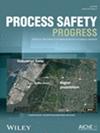So, you cannot vent: A deep dive into other explosion protection methods
IF 1
4区 工程技术
Q4 ENGINEERING, CHEMICAL
引用次数: 0
Abstract
Current NFPA standards for managing combustible dust hazards require equipment with an explosion hazard to be protected from the effects of deflagration. These protections include deflagration venting in accordance with NFPA 68, Standard on Explosion Protection by Deflagration Venting, 2023 Edition, or oxidant concentration reduction, combustible concentration reduction, deflagration suppression, or deflagration pressure containment, via NFPA 69, Standard on Explosion Protection Systems, 2024 Edition. It makes sense to choose the simplest and most cost‐effective option based on the inherent design and risk of the operation. Implementation of any one of these protection methods requires an understanding of the method and all the associated requirements. While the basic methods are fairly straightforward, the associated requirements are often less understood. In this paper, the author will introduce the basic methods and take a deep dive into the associated requirements of each method of protection. Based on the author's experience in evaluating protection systems, common misunderstandings will be highlighted, for example, the margin of safety to apply and the operational limits required to be developed and documented for oxidant concentration reduction systems.因此,不能排气:深入探讨其他防爆方法
现行的 NFPA 可燃粉尘危险管理标准要求对有爆炸危险的设备进行保护,以防爆燃的影响。这些保护措施包括根据 NFPA 68《爆燃通风防爆标准》(2023 年版)进行爆燃通风,或根据 NFPA 69《防爆系统标准》(2024 年版)降低氧化剂浓度、降低可燃物浓度、抑制爆燃或抑制爆燃压力。根据作业的固有设计和风险,选择最简单和最具成本效益的方案是合理的。实施任何一种保护方法都需要了解该方法和所有相关要求。虽然基本方法相当简单明了,但相关要求往往不那么容易理解。在本文中,作者将介绍基本方法,并深入探讨每种保护方法的相关要求。根据作者在评估保护系统方面的经验,将重点介绍常见的误解,例如,氧化剂浓度降低系统应适用的安全系数以及需要制定和记录的操作限制。
本文章由计算机程序翻译,如有差异,请以英文原文为准。
求助全文
约1分钟内获得全文
求助全文
来源期刊

Process Safety Progress
工程技术-工程:化工
CiteScore
2.20
自引率
10.00%
发文量
99
审稿时长
6-12 weeks
期刊介绍:
Process Safety Progress covers process safety for engineering professionals. It addresses such topics as incident investigations/case histories, hazardous chemicals management, hazardous leaks prevention, risk assessment, process hazards evaluation, industrial hygiene, fire and explosion analysis, preventive maintenance, vapor cloud dispersion, and regulatory compliance, training, education, and other areas in process safety and loss prevention, including emerging concerns like plant and/or process security. Papers from the annual Loss Prevention Symposium and other AIChE safety conferences are automatically considered for publication, but unsolicited papers, particularly those addressing process safety issues in emerging technologies and industries are encouraged and evaluated equally.
 求助内容:
求助内容: 应助结果提醒方式:
应助结果提醒方式:


